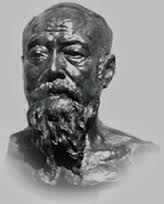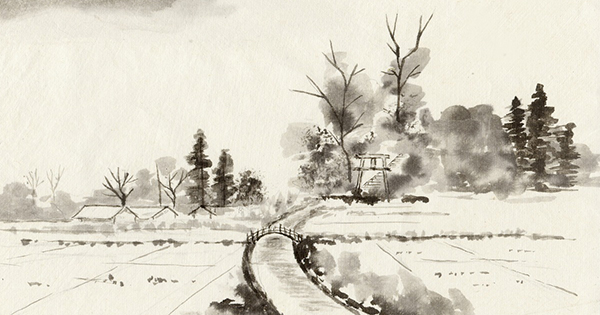Northern China gave birth to many styles of martial arts, most notably the internal martial arts of Taijiquan, Baguazhang and Xingyiquan. These arts were invented and developed in North China. Many martial artists were trained, gathered, challenged, and exchanged skills in the northern part of China. Especially in Beijing, where the royal family hired the most famous martial artists to guard and train the officials in the palace.
Northern Wu style Taijiquan history is a part of the history of Taijiquan that originated with members of the Chen family. The Chen’s lived in Chen Family Village, Chenjiagou for generations in Henna Province. Chen Wang Ting invented this boxing style with softness, circularity, and internal force. They kept their boxing within the family until the time of Chen Chang Xing (1771-1853), who accepted Yang Lu Chan as a student. The Chen family kept a low profile and practiced inside of the village until Chen Fa Ke began to teach in Beijing in 1928.
Yang Lu Chan (1799-1872) was from Yongnian County, in Hebei Province. He went to Chen Village in search of livelihood. He learned Chen Style Taijiquan from Chen Chang Xing. After his returning to his hometown, Yang passed the art on and was eventually appointed martial arts instructor to the imperial banner battalion in the capital. He revised the original Chen family form, making it gentler in order to be able to teach it to more people and founded the Yang Style Taijiquan.
When Yang Lu Chan taught the Imperial Guard Taijiquan in Beijing, Wang Chun, Ling Shan, and Wu Quan You were his three top students. Wan Chun had the hardest Fa Li, Ling Shan threw people the farthest, and Wu Quan You had the best neutralizing skill. Later on Wu Quan You developed his own Taijiquan style, called Wu Style Taijiquan.
The founder: Wu Quan You
G reat Grandmaster Wu Quan You (1834-1902) was the founder of Wu Style Taijiquan and was born in Da Xing County, Beijing. He was a Manchurian and a member of the Imperial Guard in Beijing. He learned Taijiquan from the founder of Yang Style, Master Yang Lu-Chan. Chuan You‘s area of specialization was neutralization. He also studied with Yang Lu Chan’s son, Yang Ban Hou. Through decades of training, he became a very well-known master who had the true skills of Yang Family Taijiquan. Based on the principles of Taijiquan and the influence of studying with Ban Hou, he founded his own style of the art – The Wu Style.
reat Grandmaster Wu Quan You (1834-1902) was the founder of Wu Style Taijiquan and was born in Da Xing County, Beijing. He was a Manchurian and a member of the Imperial Guard in Beijing. He learned Taijiquan from the founder of Yang Style, Master Yang Lu-Chan. Chuan You‘s area of specialization was neutralization. He also studied with Yang Lu Chan’s son, Yang Ban Hou. Through decades of training, he became a very well-known master who had the true skills of Yang Family Taijiquan. Based on the principles of Taijiquan and the influence of studying with Ban Hou, he founded his own style of the art – The Wu Style.
In the Wu Style Taijiquan lineage, we respect Wu Quan You as the first generation. The second generation were, Quan You’s son Wu Jian Quan and Quan You’s senior disciple Wang Maozhai who led the art to two separated locations and created the southern and northern groups of Wu Style Taijiquan.
Wu Quan You‘s area of specialization was neutralization. Quan You had three primary disciples: His son Wu Jian Quan (1870-1942), Wang Mao Zhai (1862-1940) and Guo-Fen. Wu Style Taijiquan developed into two branches in Beijing, one from earlier students of Quan You, and the other from students of Wu Jian Quan. Wu Jian Quan modified the forms taught to him by his father. He utilized a narrower circle and created many new ways to apply the form in a practical manner. In 1924, Master Wu Jian Quan, along with colleagues, Xi Yu Sheng, Yang Shao Hou and Yang Cheng Fu, founded a famous martial arts school. This had an important effect in the practice of Taijiquan as it became available to the general public for the first time.
Characteristics of Wu Style
Wu style is the most rigorously defined style of Taijiquan. Movements are relatively small and compact. Emphasizing the manipulating of the connective tissue in opening and closing of the joints.
The postures in Wu style are recognizable by the use of the space between the thumb and index finger (hu kou) called the tiger’s mouth. Also characteristic of Wu Style Taijiquan is the ox plow stance features a straight back yet slanting spinal alignment- with a straight line from the head to the back foot.
Wu style Taijiquan’s special softness of movement, comfortable expanded postures, unique footwork, straight when slanting spinal alignment (ox plow stance), and effective martial combat have gained the art many enthusiasts around the world.
* the information in this article was excerpted from the book “Classical Northern Wu Style Tai Ji Quan-“by Tina Chunna Zhang and Frank Allen”

Leave a Reply